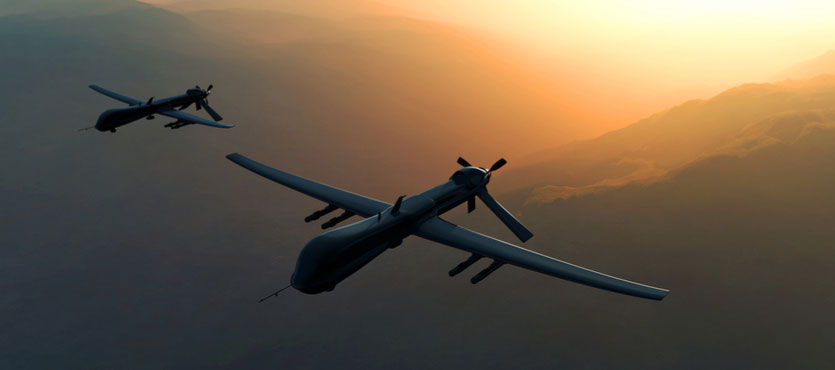As the nature of combat changes, the nature of combat-related injuries is changes, as well. That is especially true for Afghanistan contractors, like the one described below, who work with the drone program.
Like many other Americans, Christopher Aaron signed up to do his part in the War on Terror shortly after 9/11. By 2006, he worked with the nascent drone strike program. Mr. Aaron could say little about his job for security reasons. As an aside, many contractors sign nondisclosure agreements. Nevertheless, Mr. Aaron spent most of every day looking at flat screen monitors which were windows into the Afghan countryside. Initially, the drones mostly collected surveillance data. It was not long before the DoD or CIA used this information for drone strikes. People like Mr. Aaron were the triggermen.
In 2010, Mr. Aaron started experiencing Post Traumatic Stress Disorder. His symptoms began with chills, headaches, and joint pain. He later suffered from debilitating nausea, skin welts, and digestive problems. His personality changed as well. Friends said that he lost self-confidence and became much more withdrawn. Mr. Aaron also suffered from a recurring nightmare in which someone forced him to look at the images of drone strike victims. “I was very, very unwell,” he recalled.
Just as many other wounded warriors have done before, Mr. Aaron has turned a hobby into a career. He now serves as a precious metals analyst not far from his New England boyhood home. Earlier in 2018, Mr. Aaron spoke to a church group about his experiences. Before starting his speech, he asked for a moment of silence “for all of the individuals that I killed or helped to kill.”
Is PTSD a “Disorder” or an “Injury”?
The answer to this question means a lot in terms of Defense Base Act compensation. The DBA does not pay for only physical injuries, as psychiatric injuries are also covered. However, a growing body of evidence suggests that most brain injuries involve trauma: it is just that the trauma may not be visible.
Some believe that PTSD sufferers like Mr. Aaron may have sustained moral injuries. The term first surfaced in a 1994 book about Vietnam War brain injuries. In his work Achilles in Vietnam, psychiatrist Jonathan Shay argued that soldiers who saw other soldiers get shot and killed were not the only people who were at risk for PTSD. Instead, “I shall argue what I’ve come to strongly believe through my work with Vietnam veterans: that moral injury is an essential part of any combat trauma,” he wrote.
The Link Between Armed Combat and Brain Injuries
As research in this area accumulates, scientists believe they have identified two ways that combat causes brain injuries.
Explosive blasts create shock waves that are strong enough to knock people over, break bones, and cause other serious injuries. These shock waves affect the brain in much the same way. Researchers believe they have identified a secondary wave, which is something like an Electromagnetic Pulse. EMPs disrupt electronics, and these shock waves disrupt brain functions.
These types of injuries are quite common. At least 20% of Iraq veterans come home with a brain injury. Because of the high proportion, many practitioners call these wounds the “signature injury” of the Iraq and Afghanistan Wars.
Researchers are unsure whether shock wave brain injuries only occur after close proximity to an explosion or if the cumulative effect of repeated small exposures can cause such an injury.
There are similar questions with regard to the second brain injury category, which is exposure to combat stress. Researchers know that this exposure erodes the hippocampus. This part of the brain controls logic and reasoning. Without a strong hippocampus, the amygdala (part of the brain that controls emotional responses) assumes a larger behavioral role. That change explains why PTSD victims experience symptoms like:
- Heightened awareness,
- Nightmares,
- Flashbacks, and
- Personality changes.
Recall that Mr. Aaron suffered from many of these symptoms. Experiences like his, as well as Dr. Shay’s research, indicate that prolonged exposure to low-level stress can cause PTSD.
Mostly due to this emerging research, the Canadian Armed Forces recently redesignated PTSD as OSI (Operational Stress Injury). Officials hope that the name change will reduce the stigma associated with PTSD and encourage more victims to get the help they need.
Compensation Available
Brain injuries are permanent. Once brain cells die, they do not regenerate. So, these injuries are among the most expensive kind of combat-related injury. For the most part, only extensive physical therapy helps these victims get better.
The Defense Base Act pays for necessary physical therapy. These benefits also pay for all other medical bills, like emergency care, follow up care, and medical devices. The DBA may pay for other medically necessary expenses, as well, such as alterations to your home or apartment. Typically, these benefits continue until the victim is able to return to work or reaches MMI (Maximum Medical Improvement).
Lost wages benefits are available as well. If the victim cannot return to work, or must accept a lower-paying position, DBA benefits usually make up the difference. If the victim only has a temporary disability, the DBA usually pays two-thirds of the average weekly wage until the victim recovers. The AWW includes not only regular cash compensation, but also bonuses and non-cash compensation, like housing allowance.
The DBA insurance company usually pays medical providers directly, so most victims never see a bill. Moreover, the lost wages benefits are usually retroactive to the date of injury, so families have some money to pay bills during this period.
For more information about eligibility for DBA benefits, contact Barnett, Lerner, Karsen & Frankel, P.A.

